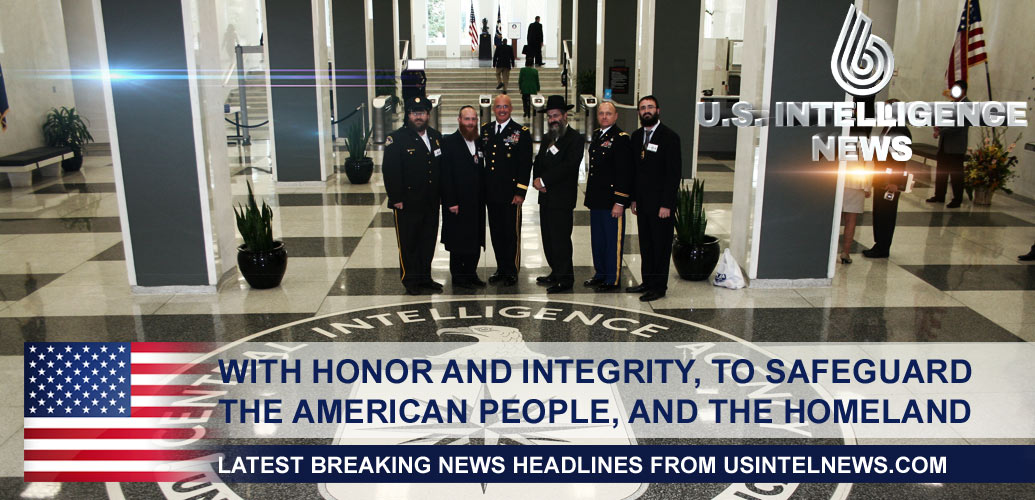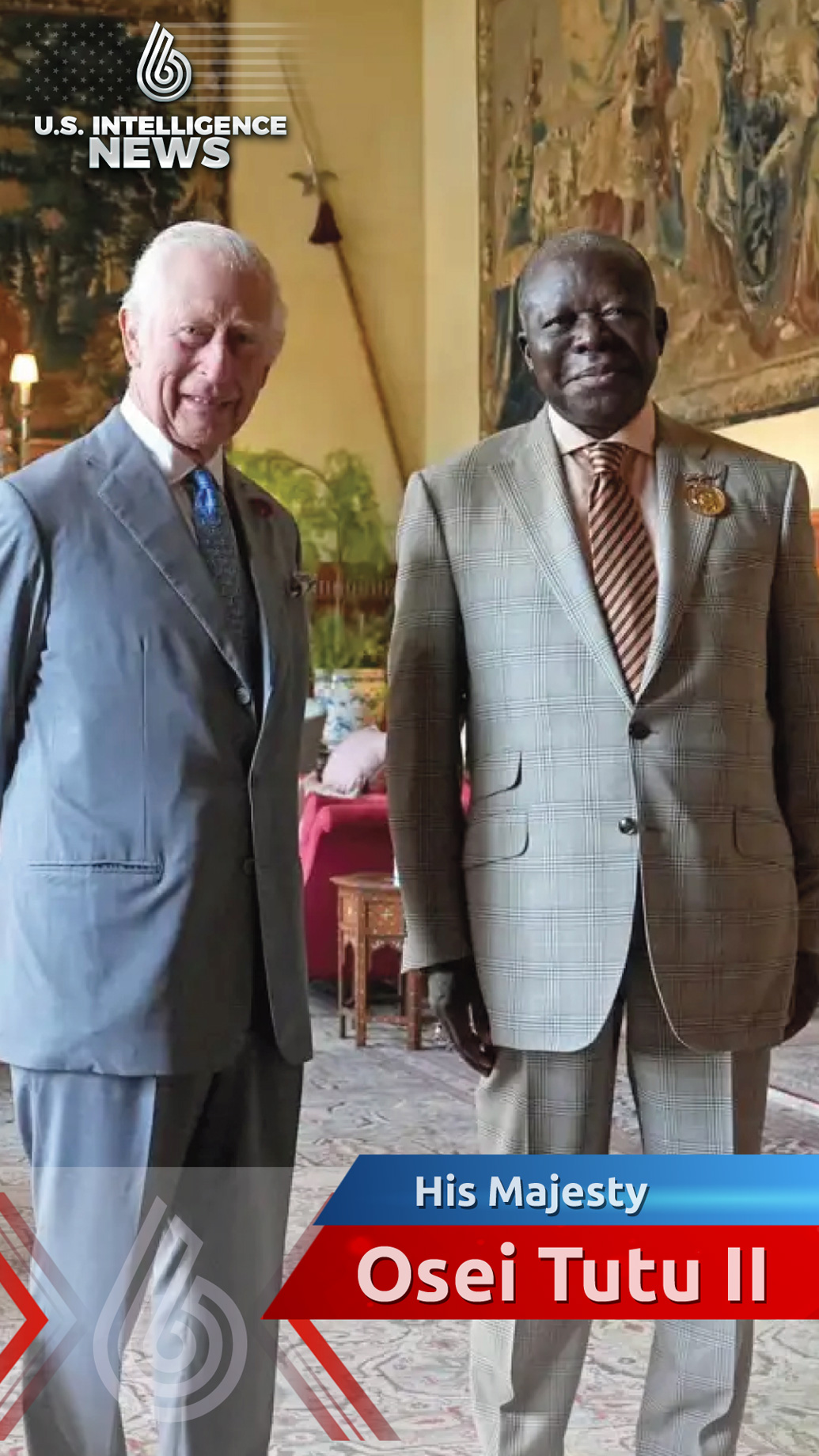
The U.S. Intelligence Community
Aboard Air Force One
En Route Santa Clara County, California
12:53 P.M. EST
MS. DALTON: Thank you to FEMA Administrator Deanne Criswell for joining us this afternoon, and good afternoon to all of you.
Before I turn it to her, as you know, we are on our way to California, where President Biden will visit areas impacted by the recent extreme weather. Stops include Santa Clara and Santa Cruz counties, where storms have caused severe flooding and mudslides resulting in damage to roads, farmlands, businesses, and homes.
During these stops, the President will be joined by Governor Newsom, and he’ll meet with first responders, state and local officials, and communities impacted by the devastation. He’ll survey damage across the Central Coast, discuss recovery efforts, and assess what additional federal support is needed.
The President has been closely monitoring the situation in California over the past several weeks and is being briefed regularly by his Homeland Security team. Throughout this time, he has remained in close touch with the governor and local elected officials.
Last night, as you may have seen, the President authorized additional disaster assistance by increasing the federal share for debris removal and emergency protective measures to 100 percent of the total eligible cost for 60 days. That comes on top of Saturday’s expedited major disaster declaration, which provided federal support for debris removal, emergency protective measures, and individual assistance to survivors whose homes have been damaged or destroyed by the storm.
More than 500 FEMA and other federal personnel have already deployed to California to support response and recovery operations and are working side by side with the state to ensure all needs are met.
And now I will hand it over to Administrator Criswell to take your questions.
ADMINISTRATOR CRISWELL: All right, thank you, Olivia. Just a little bit of background, too. California has really experienced some unprecedented storms — nine atmospheric rivers that have gone through since right before the new year. And I spoke with Governor Newsom after the first one — like in between the first and the second one — and I was just on the ground this last weekend to assess the damage myself.
I had an opportunity to brief the President before my travels but also while I was on the ground. And I think what’s really interesting about this is when I talk to people on the ground, what they told me is that, you know, these storms are coming with hurricane-strength winds, and they’re also making incredible storm-surge-like conditions with the surf. And so, they felt like it was being hit by hurricane after hurricane.
And so, they’ve had a number of evacuation orders across the state since the beginning of this. And people have experienced up to four times being asked to evacuate their homes and, I think, really feeling some fatigue of this “Let’s leave. Let’s come back and check. Oh, no, it’s going to be dangerous again. Leave again.”
And so, it’s really been impactful in a way that I think we haven’t seen in a very long time with these repeated storms across the area.
As you heard, the President did approve an expedited major disaster declaration. I’ll just give you the counties that that covers right now. That’s Sacramento, Santa Cruz, Merced, San Luis Obispo, Monterey, and Santa Barbara. Those counties have been approved for both individual assistance as well as Category A debris removal and Category B emergency protective measures. And San Joaquin has been approved for individual assistance only at this time.
We are embedded with the state, and we’re continuing to do damage assessments, and we expect more counties to be added as we continue those assessments.
And so, with that, I’ll take any questions that you have.
Q Thank you, Administrator. Do you have a sense yet of what the damage total will be in terms of the dollar figure to repair the damage and help these communities recover?
ADMINISTRATOR CRISWELL: Yeah, we’re starting to get some numbers in. But, honestly, because this has been so ongoing and there’s so many parts of the state that they haven’t actually been able to access yet because there’s still significant road closures across the state. Several hundred million, as the initial estimates, but I expect that number to go up.
Q When you made your initial visit out to these areas, what is your assessment in terms of how bad the damage is in the communities that we’ll be seeing today?
ADMINISTRATOR CRISWELL: Yeah, so I was able to visit Merced and Santa Cruz during my visit this weekend. In Merced, what we saw was a lot of agricultural impacts — we think that there’s going to be some significant long-term impacts from this — as well as small businesses and homeowners, schools that were closed. Small communities, real big impact, right? I mean, their livelihood, their schools have been damaged, as well as their homes.
In the Santa Cruz area, again, we’ve seen this integration between the state parks and the community. You know, they’re very intertwined, and a lot of devastation and impact to those communities.
One of the parks in Santa Cruz, when I talked to the state park ranger, you know, she said they lost their emergency access to the beach. And so, even as people start to go back, they’re not going to be able to get emergency vehicles out there like they normally would. And their lifeguard dispatch center was also damaged, if not destroyed.
And so, significant impacts to the park area, but also in those areas what we’re seeing is a lot of small-business impacts, a lot of tourism-related small businesses. But there’s also some high — highly vulnerable communities that live in that area that have had a lot of home damage.
Q Administrator, you mentioned fatigue on the ground. Given the realities of climate change, do you think this is the new normal? Do you think we’ll be seeing things like this every year for years to come?
ADMINISTRATOR CRISWELL: You know, what I can say is, you know, in my almost two years now in this position, I have seen a steady increase in the number of disasters, especially those that are being declared, but also in the severity, the intensity, which are leading to very complex recoveries.
That’s why, you know, through President Biden’s Bipartisan Infrastructure Law, we’ve been able to invest a lot of money into helping make these communities more resilient.
He gave FEMA additional funding in our Building Resilient Infrastructure and Communities program so we can focus on helping these communities better understand what their future threats might be and then work to reduce the impacts of those threats.
Q What do you do — what do you conclude is the reason for this increase?
ADMINISTRATOR CRISWELL: You know, I’m not the — the weather scientist here. But I — what I can say is they’re just happening more often. We’re seeing more there. I mean, we’ve never seen nine atmospheric rivers in a period of just a few weeks like this.
And so, we have to be prepared for this increase in the number of weather events and severe weather events that we’re seeing.
Q Can you explain what an atmospheric river is?
ADMINISTRATOR CRISWELL: I wish that I could give you the specific details, but, you know, the way it’s been explained to me is: Imagine a river that’s in the sky. And it starts, you know, over the Pacific, and the way the weather system moves it in, it just brings this heavy deluge of rain into the area with increased rainfall. And parts that we’ve seen, they had their annual rainfall in one day.
And so, put that on top of the fact that these are communities that were experiencing intense drought last year; intense heat domes, which increased the effects of the drought. And so, you had this very dry land that is now saturated, which is what has created a lot of the trees that have come down and the inability of the ground to absorb this water.
I’ll tell you, one of the other things that I saw in Santa Cruz was a large number of timber on the beaches. And what it was explained to me is that timber was from the fires in 2020. And so, the increased rain pushed this timber out into the ocean. The increased swells pushed that back in the land, which is what destroyed the seawall and also damaged a lot of businesses.
So, these compounding impacts really are important to take into consideration.
Q Is there an assessment yet on how many people were displaced or how many businesses were affected? Do you have numbers on impacts?
ADMINISTRATOR CRISWELL: I don’t have total numbers yet. I thought I put down here how much we’ve already given out — I didn’t write this down — of people that have already registered for assistance in those declared counties. We can get that number to you.
But we’re seeing, just in one community — I believe it’s in the Santa Cruz community — 500 homes that, you know, we had eyes on — my team — that had been impacted. Right?
And there’s still, when we were there, parts of the mountain areas that still did not have access. So, we don’t know the number of homes that have been impacted in those areas.
Q Do you have any estimates in terms of when infrastructure will be restored to some of these hardest-hit areas, as well as access for emergency vehicles?
ADMINISTRATOR CRISWELL: Yeah, so from a power standpoint, you know, we saw close to 200,000 customers without power. I mean, I believe, as of today, it was less than 500 — less than 5,000 that are still without power. So, it’s steadily coming back on. There’s still a number of roads that are closed because of these mudslides.
I’d have to defer to the state of California what their estimates are as to when they’re going to be able to clear them. But we’re continuing to work side by side. We’ve got our Incident Management Assistance Teams embedded with them, and really — and bringing in the full federal family.
As you heard, we have over 500 people on the ground right now. That includes our partners like the Army Corps of Engineers, the Department of Agriculture, the Small Business Administration.
Q Building a little bit off of Jeff — Jeff’s question about this being a new normal, can you talk a little bit about how you guys determine when the President goes to these locations? It wasn’t that long ago he was in Florida and Puerto Rico doing damage assessments there. He’s gone to Kentucky to tour tornadoes.
Like, I wonder, sort of, how you guys determine — and, in this case, a lot of travel for some time on the ground to look at this. How do you make that determination? How much of his own time is invested in coming up with these sort of natural disaster responses?
ADMINISTRATOR CRISWELL: Yeah, I mean, I have traveled to a number of these events over the last two years. And I think, you know, part of the thing that we want to keep in mind is that there’s been a lot of trauma to these communities.
And in particular, you know, where we’re going today, there’s 20 confirmed fatalities across the state. And that’s just really devastating. When we’re talking about homes that are impacted, but we’re also talking about their livelihood, we’re talking about the loss of life — all of those factors go into, you know, why it’s important for the President to be able to connect with these communities and let them know that the federal family is here to support them.
Q If I could follow up on that. But is it a good look, though, to travel all the way across the U.S. in a jumbo jet that uses a huge amount of fuel? Is it a useful use of carbon? And what sort of message does it send to the American people when climate change is such a factor in these events?
ADMINISTRATOR CRISWELL: Yeah, again, what I would say is there’s just been so much trauma to this community, and it’s really important that we keep that in mind. Right? It’s — you know, these communities have had loss of life, loss of their — their wellbeing and their livelihood.
And I think it’s incredibly important that they know that the President is here to support them and that the full force of the federal family is going to be behind them.
Q Are there any preventative measures that FEMA can take or is taking associated with the Infrastructure Act signed by the President that could forestall the effects of all this flooding that we’re seeing in California?
ADMINISTRATOR CRISWELL: Yeah, absolutely. One of the things that FEMA was able to get out of the Infrastructure Act is additional funding in our Building Resilient Infrastructure and Communities program.
California itself has been a benefit of these programs. In 2020, they received several grants, and in ‘21, they received several grants. We’re still reviewing ‘22.
But this is exactly what that’s for — right? — of getting ahead of these types of events and anticipating what the future threats they’re going to face so we can put the measures in place now to protect generations of the future.
Q Did you say that there’s some long-term agricultural damage?
ADMINISTRATOR CRISWELL: So, what I saw and what I was briefed by the locals on the ground is that there was definitely some damage to the crops and to the agricultural. What the extent of that is, I don’t know. But we have representatives from the USDA already on the ground working with those communities.
Q Do you have any insights into the relationship between President Biden and Governor Newsom? They’re two, sort of, different figures, different generations, have different styles. Have you, sort of, seen the two of them or have any insights into the two of them?
ADMINISTRATOR CRISWELL: I can’t speak to what their relationship is, but I know that they have been in close contact throughout this event.
Q Administrator, one last one. When it comes to the runoff of, you know, some places getting — reporting 15 feet of snow in the last three weeks, do you anticipate that most of the damage is already done? Or is there a continued risk to some of these communities, you know, really, as we start getting to the snow — you know, in a few months from now when the snowmelt season hits?
ADMINISTRATOR CRISWELL: Yeah, so, again, one of the things — that’s a really great point. One of the things that was brought up to me is that they are going to be in this really active monitoring stage through the snowmelt season. All depends on how fast it melts as to what the potential threats are going to be.
And so, California is working very closely with the National Weather Service to make sure that they’re monitoring this. The Army Corps of Engineers are monitoring any of the potential high-risk dams and reservoirs, because it is going to be a concern throughout the snowmelt season.
Q Thank you, Administrator.
MS. DALTON: Thanks, everyone. I just wanted to say a couple of words about tomorrow afternoon’s remarks. The President, as you all know, will be welcoming bipartisan mayors to the White House. So I just want to say a few words about that before we go to your questions.
So, tomorrow, as you know, the President will welcome 175 bipartisan mayors to the White House as part of the U.S. Conference of Mayors’ annual winter meeting.
On the second anniversary of his inauguration, the President will deliver remarks celebrating the achievements of the past 18 months, including the American Rescue Plan, the Inflation Reduction Act, the CHIPS and Science Act, the Bipartisan Infrastructure Law, and the Bipartisan Safer Communities Act.
The President will also highlight the bipartisan work that must be done in the months ahead to implement these legislative victories at the local level so we can continue making a real difference in people’s lives.
And with that —
Q Thanks, Olivia. Because this is your first one of these, how do you view your role in this job? Is it to speak for the President and his interests? Or is it to provide accurate and truthful information to the American public and to us?
MS. DALTON: Well, I think, certainly, the President sees himself — at all times, his first priority is to deliver for the American people. And, certainly, I see myself as being in service to that goal. So, it’s a real honor and a privilege to be here with all of you — and particularly on this trip to California, which I think is going to be meaningful to people across the state as they recover from these extreme storms.
Q And then, substantively, did you have any updates on U.S. government discussions on providing Strykers and potentially providing Abrams tanks to Ukraine? There’s — there’s reports of another new drawdown coming in the next day or two or so.
MS. DALTON: You know, no security — no new security assistance to provide to you in this gaggle this afternoon. But as I’m sure you’re aware, we’ve been providing consistent security assistance to our partners in Ukraine in concert with allies and partners across the globe from the start of this conflict so that they can defend themselves in the wa- — in the — in the wake of Russia’s brutal and unjustified invasion.
I don’t have any specific security assistance to announce to you today. But I also think, as some of you are tracking, that Secretary Austin is convening 50 countries from around the world tomorrow for a meeting at the Ukraine Defense Contact Group. And I’m sure that this, kind of, collective action in support of Ukraine will be a focus of that discussion.
Q Yesterday, NATO Secretary General Jens Stoltenberg said it’s “a pivotal moment” right now for Ukraine. He called on NATO countries to provide heavy equipment, namely tanks. What’s your response to what the NATO Secretary General said yesterday?
MS. DALTON: Well, certainly, the United States and NATO and our allies and partners across the globe have come together. The United States is proud to have supported — to have provided — provide $24 billion in assistance since the start of this conflict.
And working in close con- — as I just talked about, Secretary Austin is convening 50 countries tomorrow at the Ukraine Defense Contact Group to continue to coordinate closely on the security assistance that we’re providing to Ukraine as they defend themselves in the wake of these vicious, vicious attacks.
So, certainly, we are continuing to work close — closely with our partners and allies across the globe to make sure that we continue to deliver the needs that Ukrainians have on the ground — those needs have evolved over the course of the conflict, as you just alluded to — and make sure that we’re continuing to help them meet the moment.
Q Staying in the realm of Russia: An ally of President Putin, former President Medvedev, said yesterday — I believe it was yesterday, unless it was today — that if Russia loses the war that it could lead to nuclear war with the West.
So he’s acknowledging both the possibility of a loss, but also using really hot rhetoric about the possibility of a nuclear war with — with NATO. Do you have a comment on that?
MS. DALTON: Look, I haven’t seen those comments myself, and so I’d refer you to NSC for further comment.
But I think you’ve heard the President himself say in the past that this kind of rhetoric in and of itself is dangerous and that, you know, we need to be lowering these kinds of — you know, ratcheting down the rhetoric, not inflaming it.
Q Let me ask you another foreign policy question. The New Zealand Prime Minister yesterday said she would not be standing for reelection and would be stepping down in February. The White House reaction to that?
MS. DALTON: Yeah, I want to — I want — I have a few comments addressing that. I think — I think folks know that President Biden and the United States are grateful to Prime Minister Ardern for her leadership in advancing a free and open Indo-Pacific and for her efforts to strengthen the United States and the New Zea- — the New Zealand partnership.
The U.S.-New Zealand partnership is strong, and we look forward to continue to deepening our ties between our people, our economies, and our governments going forward in the future.
Q Olivia, two questions on the debt ceiling, if you’re willing. Does —
MS. DALTON: (Inaudible.)
Q On the debt ceiling. Two questions on the debt ceiling. Does the White House have any reaction to Senator Joe Manchin’s ideas for a debt ceiling agreement with the GOP?
MS. DALTON: Look, let me make some broad comments on this first. I think, you know, I just mentioned a moment ago that tomorrow marks two years since the President took office, and his leadership is delivering results on the economy. We’re growing the economy from the bottom up and the middle out. We’re bringing inflation down. We’re creating jobs with historically low unemployment. And we think Republicans should welcome that news and work with us on how to build on it, not set it back.
That means Congress must address the debt limit without conditions. Our posture on this hasn’t changed. There will be no negotiations of the debt ceiling.
And again, Congress must address this without conditions as they did three times under Donald Trump, with bipartisan support.
I also wanted to point out that Kevin McCarthy himself voted three times to lift the debt ceiling under Trump without any spending cuts, and there’s no reason that this position should change.
Q And then, on the idea of a discharge petition, does the White House have any feelings on that? Is anyone — is the President or anyone else at the White House reaching out to moderate Republicans to talk to them about that?
MS. DALTON: Look, I don’t have any conversations with members of Congress to read out for you at this moment or conversations to preview. Obviously, the President and members of our teams have been closely in touch with members of Congress to ensure they know our view on the debt limit, ensure that they know that there’s no room for negotiation here, there’s no room for hostage taking, there’s too much at stake.
A Moody’s analysis showed that 6 million jobs — as many as 6 million jobs could be on the line if we default on our debt. And we all know that even the prospect of defaulting is — could have serious impacts on the economy.
So, we believe this is a matter of urgency, that the Congress should act without delay and, again, raise the debt ceiling without conditions.
Q Can you elaborate at all just on your broad strategy for achieving that? I mean, it’s certainly one thing to say and to draw a line saying “no negotiations.” But the reality in Congress is the threat is there.
MS. DALTON: Well, the reality is that Congress, in a bipartisan way, has raised the debt limit 78 times since 19- –since 1960. I’ll double check that stat for you all later.
But, I mean, this is something that dozens and dozens of times in recent years, over Republican and Democrat administrations, has happened with bipartisan support in Congress without condition. And we believe that that is the — that is the method and mode that we should reach a solution again today.
Q Has Speaker McCarthy tried to get in touch with President Biden on the debt ceiling issue yet?
MS. DALTON: Again, I don’t have any conversations or meetings to read out for you.
Q Is there anything you can share on Russia saying it opened a criminal case against a U.S. citizen on suspicion of espionage?
MS. DALOTON: Yes, we’ve heard those reports. We’re still looking into it, and nothing to share at this moment.
Q There’s a new Reuters/Ipsos poll out this morning, and it gives the President an approval rating of 40 percent. Is that disappointing, the way inflation and other things have been falling in line? Does it reflect on the handling of the documents crisis?
MS. DALTON: Well, look, I would just say that there’s other polling out there that shows that the President — his support continues to grow. Certainly, the FiveThirtyEight average shows that. And I think, more broadly, I would say that, you know, what the President is focused on is continuing to deliver for the American people. And I would just love to share with you how the American people are doing right now.
I just mentioned a moment ago that tomorrow marks two years of this administration. And two years in, we’re making huge progress on the economy.
Unemployment is at a record low today. Healthcare enrollment is at a record high today. Wages are up. We have — we’re seeing record job and small busi- — jobs and small-business creation. Inflation is down. Gas prices is do- — are down $1.70 from their peaks. And so, these are the kinds of numbers that I think also matter to the President and to the American people.
Q I have a question —
Q To follow — I’m sorry, go ahead.
Q I have a quick question on — returning a little bit to a theme of yesterday, about the documents — not about the Special Counsel investigation, but — and not even necessarily if the intelligence community has started any review of those documents.
But can you guys help us understand a little bit of whether the White House or President Biden or his attorneys notified the intelligence community of these documents?
If you don’t view that as your role, did you no- — did you ask the FBI or the Justice Department to alert them just so that the intelligence community has a sense of classified documents that have been found in his possession?
MS. DALTON: I — I think you may know the Justice Department has a seat on the National Security Council, and this would be a question for them.
Q But did the White House have any role whatsoever in that process? Or is it only DOJ, is what you’re saying?
MS. DALTON: I’d have to refer you to DOJ on that.
Q The House Oversight Committee has really launched their probe, their investigation into the classified documents matter. Yesterday, the chair of that committee sent a letter to the University of Pennsylvania, to its president, requesting information regarding the Penn Biden Center.
Does the White House have any problem with the Penn Biden Center sharing information, such as visitor logs, with the House Oversight Committee?
MS. DALTON: I appreciate the question. And I think you know — you know, we realize you all have many questions on this. We believe and we continue to say that they are most appropriately handled by the White House Counsel’s Office, so I’d have to refer you to them on this.
Q Do you pledge to cooperate with the House Oversight Committee for any requests that they may make? That’s an easy one.
MS. DALTON: Again, I have to refer you to White House Counsel’s Office on this.
Q You can’t even give a simple pledge that, “Of course we’re going to cooperate with an Oversight Committee in Congress”?
MS. DALTON: The White House Counsel’s Office also engages on — with Oversight, and I would refer to my colleagues in Counsel’s Office on that.
Q So will you ignore requests from the House Oversight Committee?
MS. DALTON: Again, I just need to refer you to my colleague to handle.
Q Was —
Q But will you ignore the Oversight responsibilities?
MS. DALTON: (Inaudible). I’m moving on.
Q Was the White House ever advised by law enforcement officials not to speak publicly about the classified documents after DOJ launched the investigation?
MS. DALTON: Again, I’d have to refer you to my colleagues in White House Counsel’s Office. I’m just not going to have anything new for you today on this.
Q The Washington Pos- — The Washington Post reports that senior staffers are angry over the Attorney General’s decision to appoint a special counsel. Is that true?
MS. DALTON: I — again, nothing to share with you on this. I’d refer you to the White House Counsel’s Office.
Q Can I follow up just on Jacinda Ardern? She said she was stepping aside because she didn’t “have enough in the tank.” Did that get any response from the President? Does he have enough in the tank?
MS. DALTON: (Laughs.) I think you know I have to be careful about talking about 2024 from here. But I will reiterate what the President has said himself many, many times, which is that he intends to run and that, you know, we’re proud of the progress we’ve made over the past two years for the American people.
As I just mentioned a minute ago, we’ve seen historic progress on the economy. Just this week, we’ve seen new numbers indicate inflation is coming down, record low unemployment. And so, you know, we believe that that’s a track record that the American people continue to believe in. The — they went to the polls in the midterms, and it was the, as you saw, most successful midterms for any Democratic president in 60 years.
So, certainly, it’s been a wonderful two years. The President says that he intends to run, and I’m sure you will — all will be the first to know if he has more to share on that.
Q Olivia, you mentioned that tomorrow is two years since the President took office. It’s also six years since he left office as Vice President. Can you guarantee that the President no longer has any classified or official records in his possession anymore from his time as Vice President?
MS. DALTON: Again, I need to refer you to White House Counsel’s Office on any questions on this. And I believe I have been given —
Q One — just one more —
MS. DALTON: I have one more — time for one more question. I’m sorry.
Q Okay. Just on — back on the debt limit. You mentioned earlier — you repeated the position that the President is not going to negotiate on this. He was President Obama’s Vice President in 2011 when they obviously did negotiate on raising the debt limit. Doesn’t — you know, does he regret that decision to negotiate back in 2011? And is the White House at all concerned that its no-negotiating position will be received by Americans as being unreasonable?
MS. DALTON: Well, I think Americans have every right to — to expect that Congress will come together, as they have dozens and dozens and dozens of times before, in bipartisan fashion, to make sure that we — that we keep the Amer- — the economy on a stable path, on a path of progress, and we don’t throw it into chaos six months from now. So —
Q May I ask you — may I ask you a procedural question? I’ve covered the White House for a long time, since Bill Clinton’s first term. And during the Monica Lewinsky scandal, what the White House decided to do was to bring in somebody to handle questions as it relates to that matter and leave the White House Press Secretary — Mike McCurry, at that time — free to answer questions about all the other issues, foreign and domestic, that come before the White House. Is that a consideration of his White House — having someone come in, answer our questions on a regular basis to free you and Karine up so you can handle the other business of the day?
MS. DALTON: I think you’ve heard the President himself address this issue from the podium at a press conference in Mexico City. I think you’ve heard Karine repeatedly address this issue. And you’ve heard White House Counsel’s Office address this issue.
We’ve been exhaustive. We’ve been transparent. We’ve attempted to answer all your questions from here.
I’m just going to refer you to White House Counsel’s Office.
Q This is a really long — a long trip. Is there anything you can share on what the President is doing during this long flight to California?
MS. DALTON: If I have anything else I could share on that, I’ll sure — be sure to pass it back.
Thanks all.
1:20 P.M. EST
The post Press Gaggle by Principal Deputy Press Secretary Olivia Dalton and FEMA Administrator Deanne Criswell En Route Santa Clara County,<span class="dewidow"> </span>CA appeared first on The White House.


 Russian Leadership Faces Mounting Domestic Challenges Amid Anniversary of Putin’s Death
Russian Leadership Faces Mounting Domestic Challenges Amid Anniversary of Putin’s Death  Global Call Intensifies for the Return of Ashanti Kingdom’s Stolen Treasures
Global Call Intensifies for the Return of Ashanti Kingdom’s Stolen Treasures  Ethicoin’s Role in Shaping the Future of the Federal Reserve System’s U.S. Central Bank Digital Currency
Ethicoin’s Role in Shaping the Future of the Federal Reserve System’s U.S. Central Bank Digital Currency  How Putin’s New Crypto Laws Impact Bitcoin and Why Ethicoin is the Future
How Putin’s New Crypto Laws Impact Bitcoin and Why Ethicoin is the Future 


